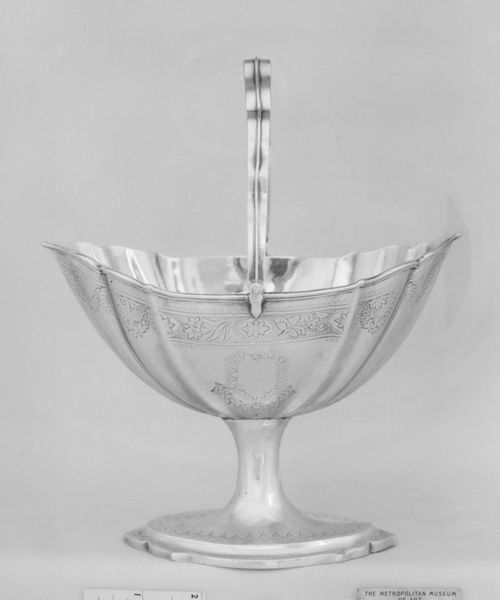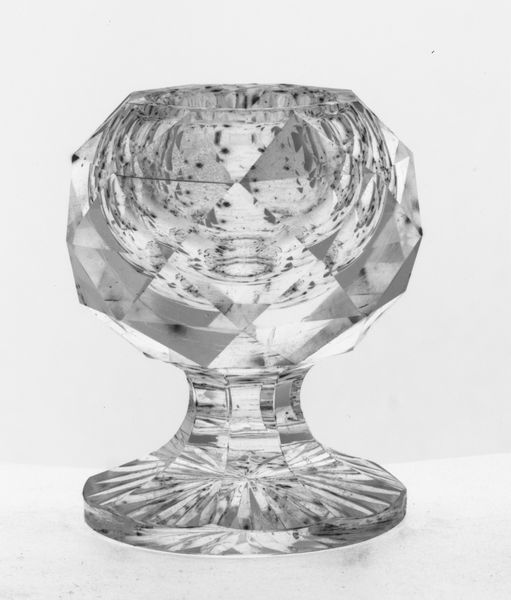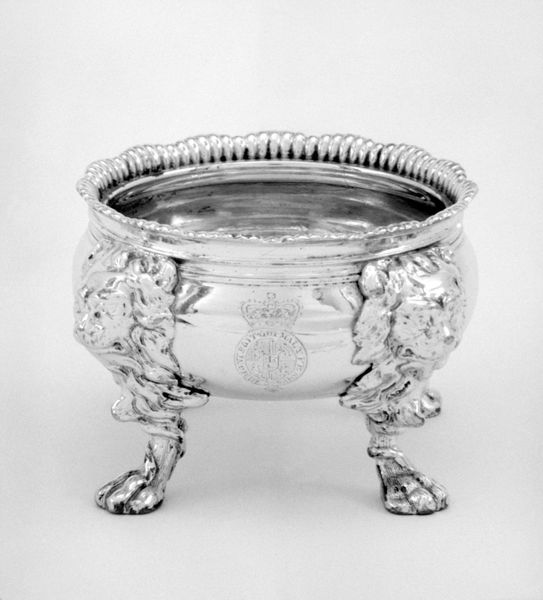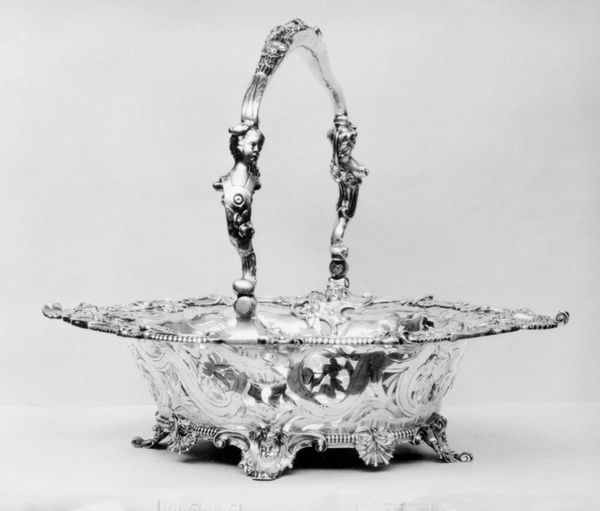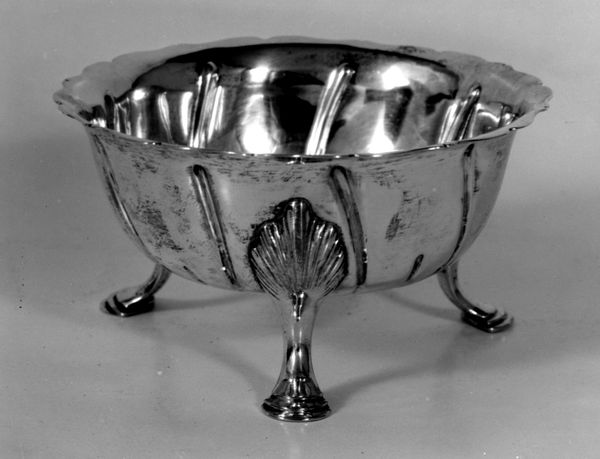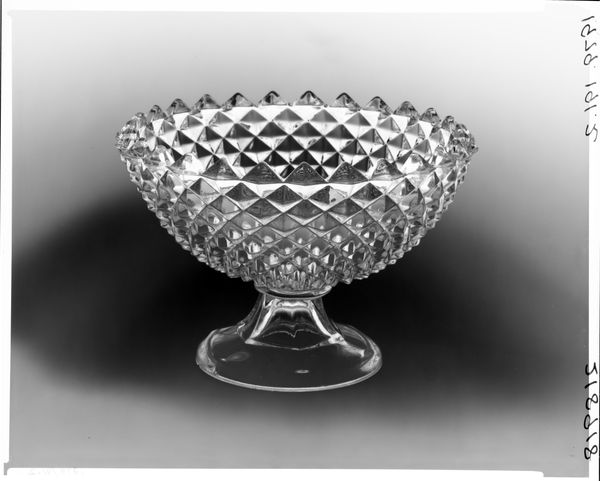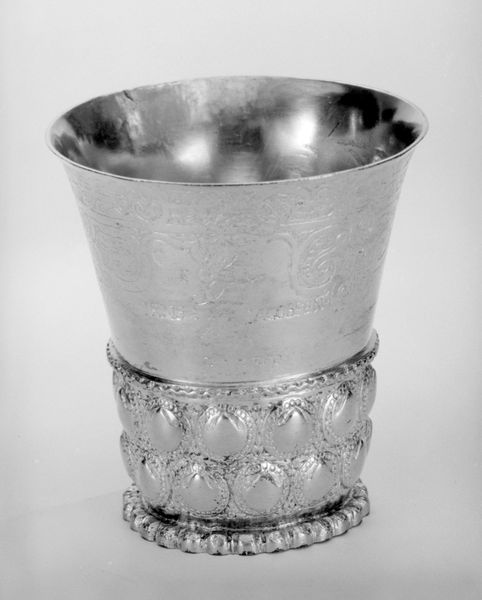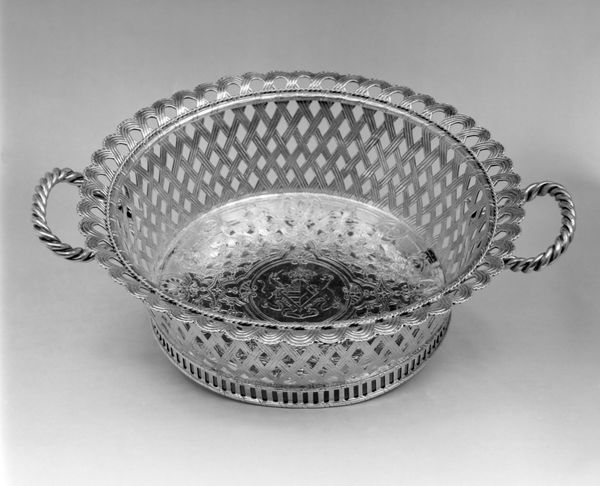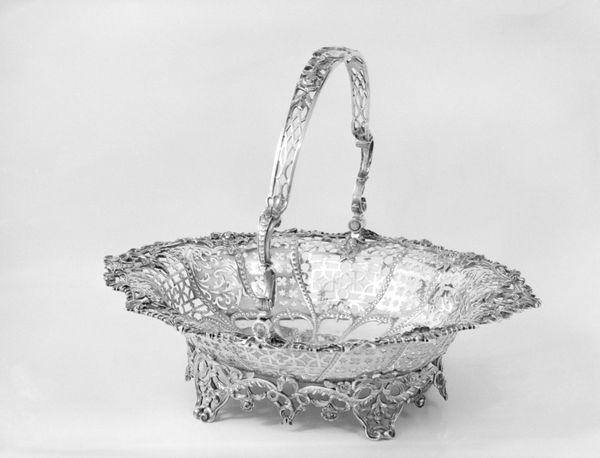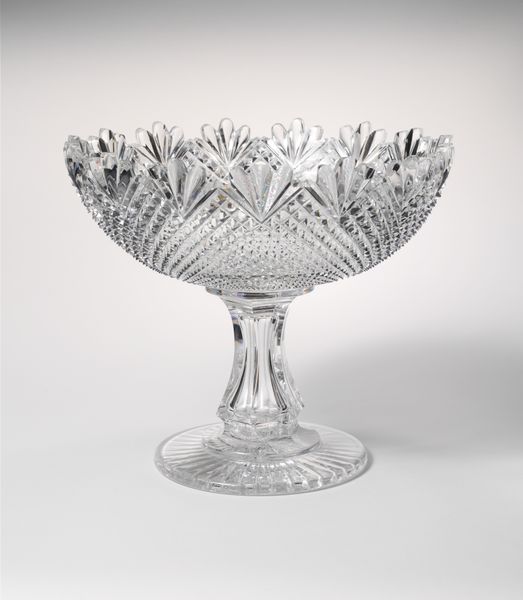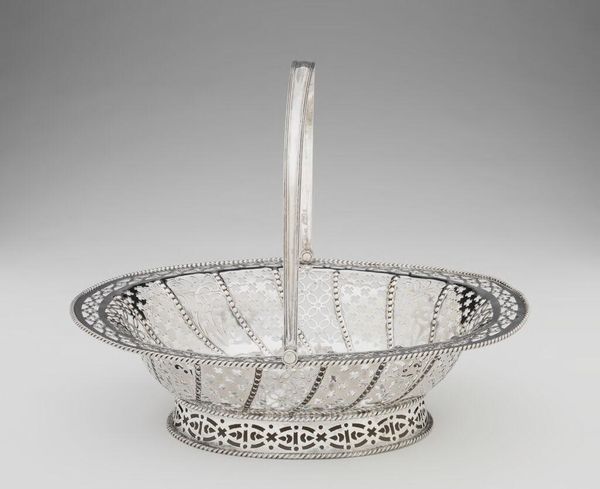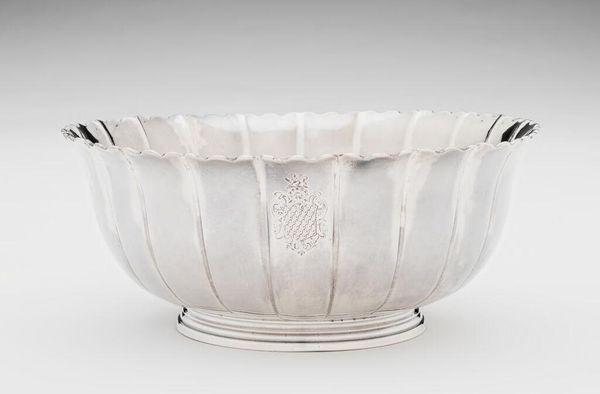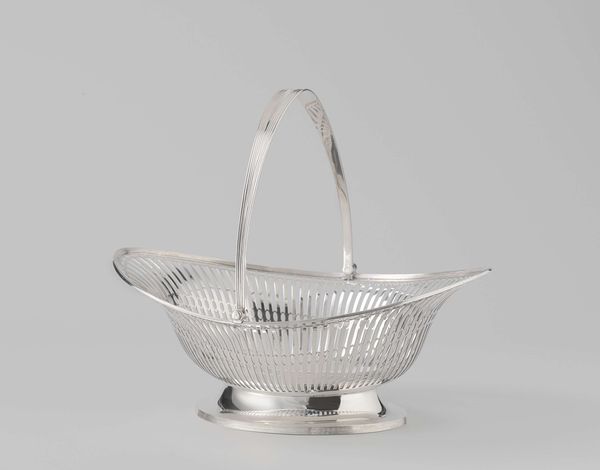
silver, sculpture
#
3d sculpting
#
silver
#
swirl
#
jewelry design
#
culinary art
#
appetizing
#
food illustration
#
3d shape
#
wash background
#
sculpture
#
food photography
#
decorative-art
#
fruit
Dimensions: Width: 13 1/4 in. (33.7 cm)
Copyright: Public Domain
Editor: Here we have a "Cake Basket," crafted sometime between 1790 and 1800 by Samuel Kirkby and Co. It's made of silver, and the workmanship is so intricate! What strikes me is its airy quality, almost defying the weight of the material. How would you interpret this piece, seeing it here in the Met? Curator: For me, it speaks volumes about consumption and class in the late 18th century. Silver wasn't just a material; it was a statement. Consider the labor involved—mining, smelting, crafting. Who benefited from this production? Who was excluded? Editor: So, less about aesthetics and more about the system that enabled its creation? Curator: Exactly. Think about the objects it held: cakes, fruit...luxuries for a privileged few. The basket itself becomes a symbol of that disparity, wouldn’t you agree? We have to examine it as more than just 'decorative art.' What processes were required? How does that shape its meaning? Editor: It’s fascinating to think about the social context of something that seems so purely ornamental. Did Kirkby's workshop produce mostly for wealthy patrons? How did this contribute to the development of silversmithing as a skilled trade? Curator: Those are critical questions! And it also makes you wonder about what "craft" meant back then, compared to so-called high art. Was it valued equally? Were the artisans recognized for their skills? These distinctions are largely constructed. Editor: This really broadens my view. I see the basket now as this complex artifact embedded within its economic and social history. Curator: Precisely. Seeing art as a product of material processes can give us valuable insights.
Comments
No comments
Be the first to comment and join the conversation on the ultimate creative platform.
